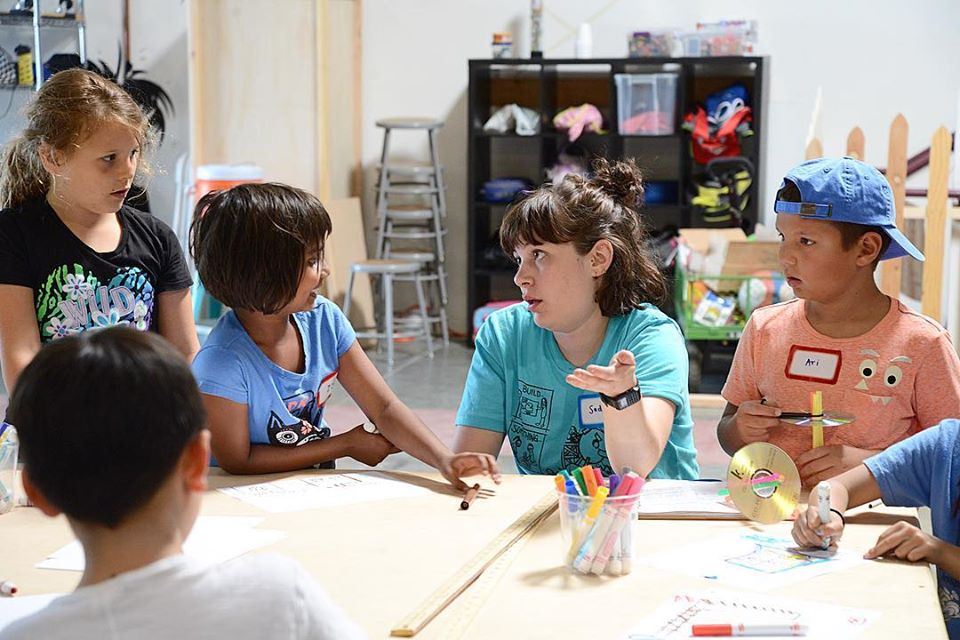Rethinking Strategies for Engagement
Educational strategies and learning experiences are often designed with an attempt to engage students by appealing to their perceived gender or cultural interests. However, many of these strategies are overused and miss the mark, relying on stereotypes rather than genuine understanding of students and their needs. Perhaps it is time to consider changing the way we approach teaching boys and consider more of the strategies we have developed for teaching girls?
Pandering to stereotypical, gender-based interests as a gateway to meaningful learning experiences is ineffective, and its overuse is pushing boys away from understanding and widening the achievement gap with girls. To truly captivate and educate students, it is crucial to move beyond gendered interests and instead focus on what we know about human interests. By understanding and addressing the intrinsic motivations and psychological needs that drive all students, educators can create more effective and inclusive learning experiences.
Uncovering the Deeper Hooks: Beyond Appealing to “Boys”
The challenge of engaging boys and teens in developing literacy and communication skills is a persistent one. Too often our post-pandemic creative ideas in enhancing education engagement for boys relies on overused and outdated gender based ideas: gamification, competition, video game-addiction, violence, adventure, an engineering or a technology hook, under the assumption that these themes inherently captivate young male learners. However, these approaches can sometimes fall short, resulting in disengagement and unmet educational goals. A radical shift is necessary to create more meaningful and lasting engagement.
Beyond Just Initial Appeal
Too often in education we rarely advance our strategy beyond the initial engagement idea-
Stereotypical “boy interests” like video games, technology, and action-based content are often just superficial attractions for boys. Their true appeal lies in deeper human interests and psychological needs. In my experience teaching young boys, I have come to believe that boys interest are most readily attained by engaging their need for responsibility, independence and autonomy. Projects, work and opportunity to practice skills that allow students to create are easily the most engaging for boys, and for most students, aged 10-14.
Self-Determination Theory (SDT) posits that people are motivated by a need for autonomy, competence, and relatedness. Video games often fulfill these needs through various mechanisms. Engaging graphics in video games captivate the imagination and provide a sense of accomplishment. Video games are particularly effective at inducing flow states, providing players with a sense of immersion and satisfaction. Video games can serve as a form of escapism, allowing players to cope with stress and emotional difficulties by immersing themselves in virtual worlds. Violent video games can provide a sense of power and dominance, which can be appealing to players. The ability to overcome adversaries, conquer challenges, and exert control in a virtual world can fulfill a desire for power that may be lacking in real life.
“results from all studies showed that enjoyment, value, and desire for future play were robustly associated with the experience of autonomy and competence in gameplay. Violent content added little unique variance in accounting for these outcomes and was also largely unrelated to need satisfactions. The studies also showed that players high in trait aggression were more likely to prefer or value games with violent contents, even though violent contents did not reliably enhance their game enjoyment or immersion. ” Przybylski, A. K., Ryan, R. M., & Rigby, C. S. (2009). “The motivating role of violence in video games”. Personality and Social Psychology Bulletin, 35(2), 243-259.
Technology, with its ever-evolving landscape, symbolizes hope, wonder, and the promise of the future. To create meaningful educational experiences, we must tap into these underlying interests and provide alternate activities that satisfy these deeper hooks.
1. Independence and Creativity
Video games captivate the visual senses and stimulate creativity. The WOW factor that video games bring to the experience is somewhat universal and not at all limited to boys and not at all limited to violent stories or settings. This attraction can be harnessed in educational settings through activities like digital storytelling, graphic design, and challenging integrated art and engineering projects. These activities allow boys to access their imaginations and apply their practice in creating visual elements to express themselves and create their own immersive experiences.
In my youth during the 1980’s video games absolutely captured my attention. The simple interactions between the player and the TV, providing choices and a unique experience that allowed the player to improve over time, all of it felt so innovative and unexpected to me at the time. The only thing that held my interest and motiavted me more than playing video games was the idea that I could create my own video games and fill the screen with my own stories and ideas. I sought out a book on programming from a local library and set about programming my first game to the tape drive attached to an Atari Basic system. I would do anything to get a little extra time out of class and in front of the computer to work on my first game.
I believe the same types of inspiratio exist for all kids, regardless of gender and we can use these powerful tools of the careers of the future to excite boys without playing to or including the negative elements of video games.
Alternate activities that build on visual stimulation and creativity:
– Digital art and animation workshops.
– Interactive storytelling using multimedia tools like stop motion or slide shows.
– Creating graphic novels or comic strips.
2. Achievement and Mastery
Technology represents the wonder of innovation and the promise of the future. Boys are naturally curious about how things work and the potential of new inventions. Engaging them in STEM (Science, Technology, Engineering, and Mathematics) activities can capture this sense of wonder and channel it into productive learning experiences. The sense of achievement in video games comes from overcoming challenges and progressing through levels. This can be mirrored in educational settings by setting clear goals and providing opportunities for boys to achieve mastery through incremental challenges and recognition.
Alternate Activities that build on hope, innovation and problem solving:
– Theater set design
– Music and performance arts.
– Innovation challenges and hackathons.
– Maker education projects that encourage students to prototype ideas and products.
Alternate Activities that engage students in achievement and mastery:
– Structured learning programs with milestones and rewards.
– Personal projects that build skills over time.
– Public exhibitions or presentations of completed projects.
 3. Social Connection and Collaboration
3. Social Connection and Collaboration
Multiplayer video games fulfill the need for social connection and teamwork. Similar social and collaborative experiences can be fostered through group projects, team-building activities, and peer learning opportunities.
Alternate Activities for connection and collaboration:
– Group research projects and collaborative learning.
– Team-building exercises and cooperative games.
– Peer mentoring and buddy systems.
Moving on from Overused Engagement Strategies and onto Creating New Experiences.
By understanding and addressing the deeper human interests behind the appeal of video games, technology, and action-based content, educators can design activities that genuinely engage boys and teens. Moreover, there is significant potential in developing a market for learning experiences that play on video game consoles and closely mimic the engagement of video games. Public performances and interactive presentations can contain the chemical stimulation of action experiences, making learning exciting and dynamic. Similarly, art-making can harness the hopeful exploration of science and technology, providing a deeper and more meaningful engagement than traditional educational technology products. These innovative approaches not only capture the excitement and wonder that attract young minds but also provide enriching experiences that promote literacy, communication skills, and overall personal development. Moving beyond superficial attractions to tap into these deeper hooks can transform educational practices and create a thriving market for new, engaging learning experiences that resonate with boys and teens.
Predictable and Manipulative Tactics
The over-reliance on stereotypical interests such as gamification and video games can often be perceived as manipulative. While these tools can initially attract attention, their predictability and superficial engagement often fail to sustain long-term interest. Boys and teens are increasingly aware of these tactics, which can erode trust and enthusiasm for learning. Themes like violence and adventure, although popular, offer only surface-level connections to boys’ deeper interests and needs. These themes may stimulate immediate engagement but lack the depth required for meaningful educational experiences. The result is often a fleeting interest that does not translate into sustained practice or skill development.
A New Approach: Authentic Engagement
Fostering intrinsic motivation is key to engaging boys and teens in literacy and communication skills. Instead of relying on external stimuli like video games, educators should focus on helping students find personal relevance and meaning in what they are learning. This can be achieved by connecting the curriculum to real-life experiences and future aspirations.
 Encouraging curiosity and creativity can lead to deeper engagement. Projects that allow boys to explore their interests and express themselves creatively can be far more impactful than standard educational games. For example, storytelling projects, creative writing, and personal blogs can provide platforms for boys to explore and develop their communication skills.
Encouraging curiosity and creativity can lead to deeper engagement. Projects that allow boys to explore their interests and express themselves creatively can be far more impactful than standard educational games. For example, storytelling projects, creative writing, and personal blogs can provide platforms for boys to explore and develop their communication skills.
Positive role models and mentorship can inspire boys to engage with literacy and communication in ways that resonate with their personal experiences and aspirations. Introducing boys to successful individuals who demonstrate the importance of these skills in various aspects of life—be it sports, business, or arts—can provide powerful motivation.
Innovative Educational Practices
There are three successful practices that have guided me in creating learning experiences throughout my career. Each of these strategies is in one way or another, based on providing students with practice and gaining meaningful experience. These elements elevate learning by asking students to problem solving for real world issues by synthesizing learning across domains in order to succeed.
1. Project-Based Learning
Project-based learning offers a hands-on approach that can captivate boys’ interests more effectively than traditional methods. By working on projects that require critical thinking, collaboration, and problem-solving, boys can see the practical applications of literacy and communication skills. Curating learning into projects also allows for personalization, enabling students to pursue topics that genuinely interest them.
2. Mindfulness and Emotional Intelligence
Integrating mindfulness and emotional intelligence into the curriculum can address the emotional and psychological needs of boys. These practices help students develop self-awareness, empathy, and emotional regulation, which are crucial for effective communication and personal development.
 3. Real-World Applications and Audiences
3. Real-World Applications and Audiences
Providing opportunities for boys to apply their skills in real-world contexts can enhance engagement. To often we promise students an experience and let them down with the reality of another insuficient model to image their way through. This could involve community service projects, internships, or collaborations with local businesses. Real-world applications make learning relevant and tangible, fostering a deeper commitment to skill development.
Creating a Supportive Learning Environment
Creating a learning environment where boys feel safe and valued is essential. This involves fostering a culture of respect, inclusivity, and encouragement. Boys are more likely to engage in learning when they feel their voices are heard and their contributions are valued.
Recognizing and accommodating the diverse interests and learning styles of boys is crucial. Personalized learning paths that cater to individual strengths and preferences can lead to higher engagement and better outcomes. This might involve differentiated instruction, varied assessment methods, and flexible learning schedules.
The traditional methods of engaging boys and teens in learning experiences need a radical overhaul. Moving beyond superficial and manipulative tactics to approaches that foster intrinsic motivation, curiosity, creativity, and real-world relevance is essential. By creating supportive, inclusive, and personalized learning environments, educators can inspire boys to develop the skills they need for personal and professional success. This new paradigm not only respects boys’ individual interests and experiences but also empowers them to become more engaged and enthusiastic learners.

